5 church models in the New Normal: Which way should your church go?
by Pastor Edric Sng // March 14, 2022, 11:03 pm
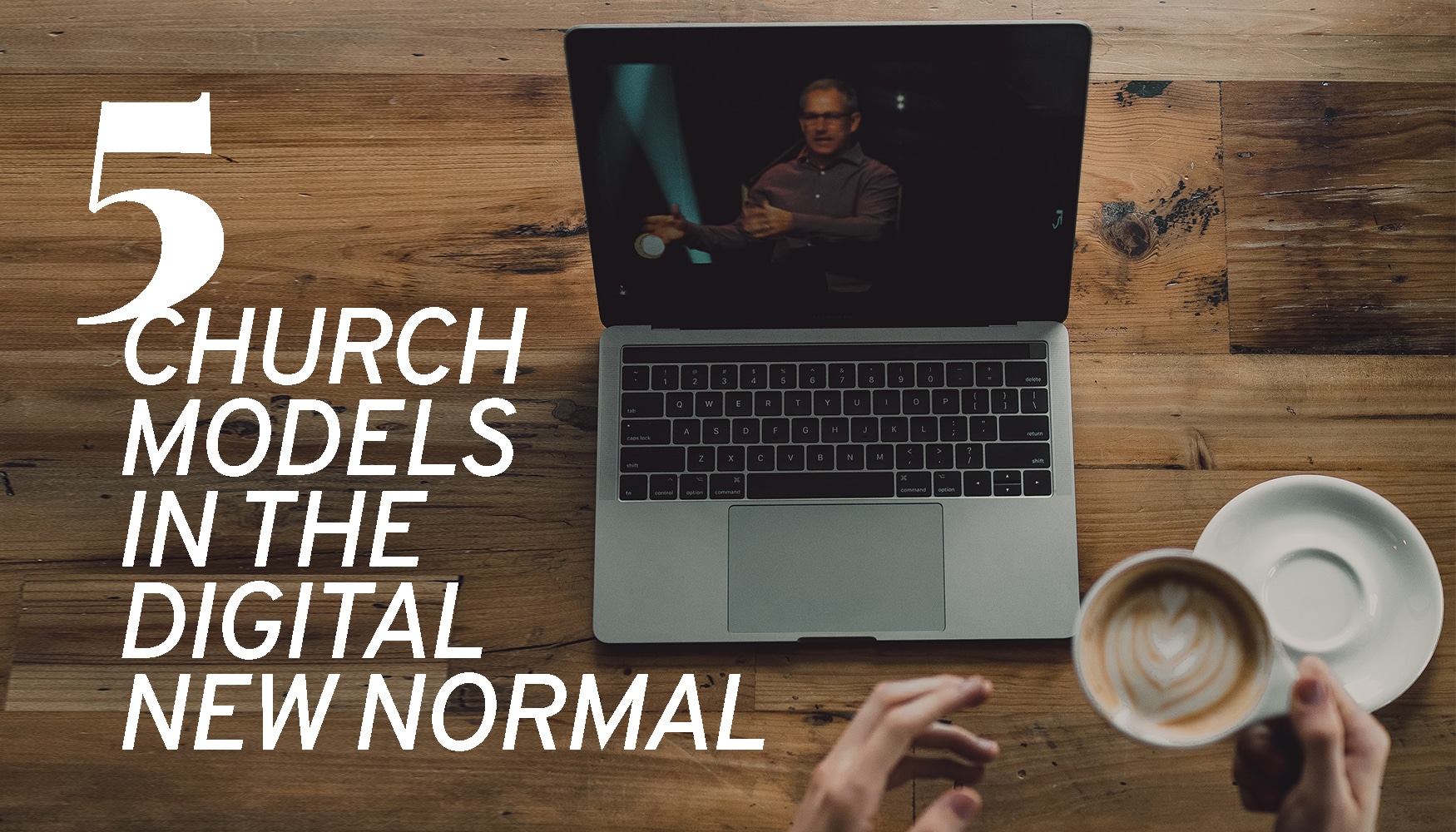
The world is moving towards the point where COVID-19 is viewed as an endemic virus we must come to terms with. In Singapore, the move to streamline safe management measures nationwide finally comes into effect today (March 15), and the restrictions on church life imposed amid the pandemic are now slowly being eased.
Now is not the time to continue to merely be a reactive, adaptive church, held hostage by prevailing guidelines. Rather, we are at the point where churches should come to an intentional decision: How much of the digital means that we have embraced since 2020 should we continue to embrace in the New Normal?
Your church will fall within one of the following 5 categories of churches on the digital spectrum. Can you identify where you are now – and where you should be in the season to come?
5 CHURCH MODELS IN THE NEW NORMAL
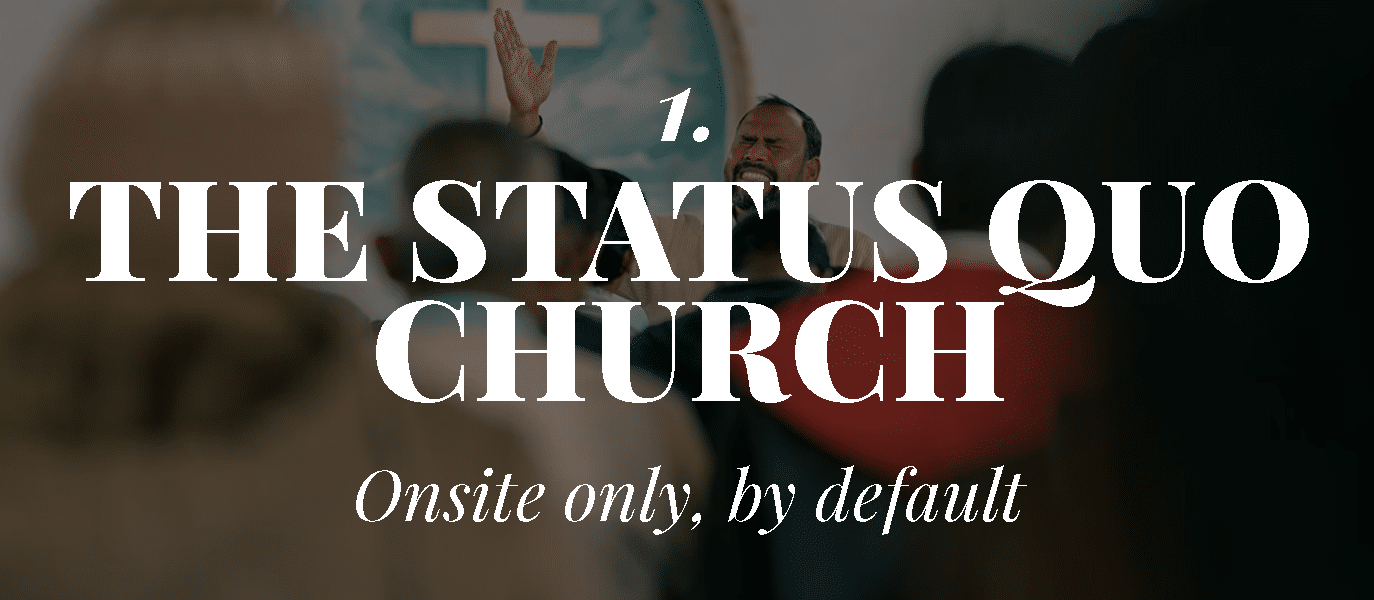
1. THE STATUS QUO CHURCH
Pros:
• Work with what you have; does not tax your existing resources
Cons:
• No way to engage those online, including members unable to come onsite
For some churches, online or hybrid solutions are not an option, due to a lack of specific resources or know-how in your congregation or staff teams.
If this is your current situation, no condemnation! Not every church needs an online service or a social media manager.
This allows a very clear focus on making sure that for those who return onsite, the experience is better than ever before, with the tangible Presence of God and a tight-knit community of faith. Without these, you will lose members to other churches with a more appealing digital shop-window.
By now, you already know the trade-offs. Those who cannot come onsite will need some intentional engagement, whether house visits or phone calls. And without a meaningful digital footprint, you forgo a potential means of growth.
We encourage churches who carry on with church life in the pre-pandemic status quo to stay open-minded to digital possibilities. Pro tip: Empower and equip your youth to spearhead any digital exploration. You may be amazed how much young, passionate digital natives can achieve if they know they have your trust.
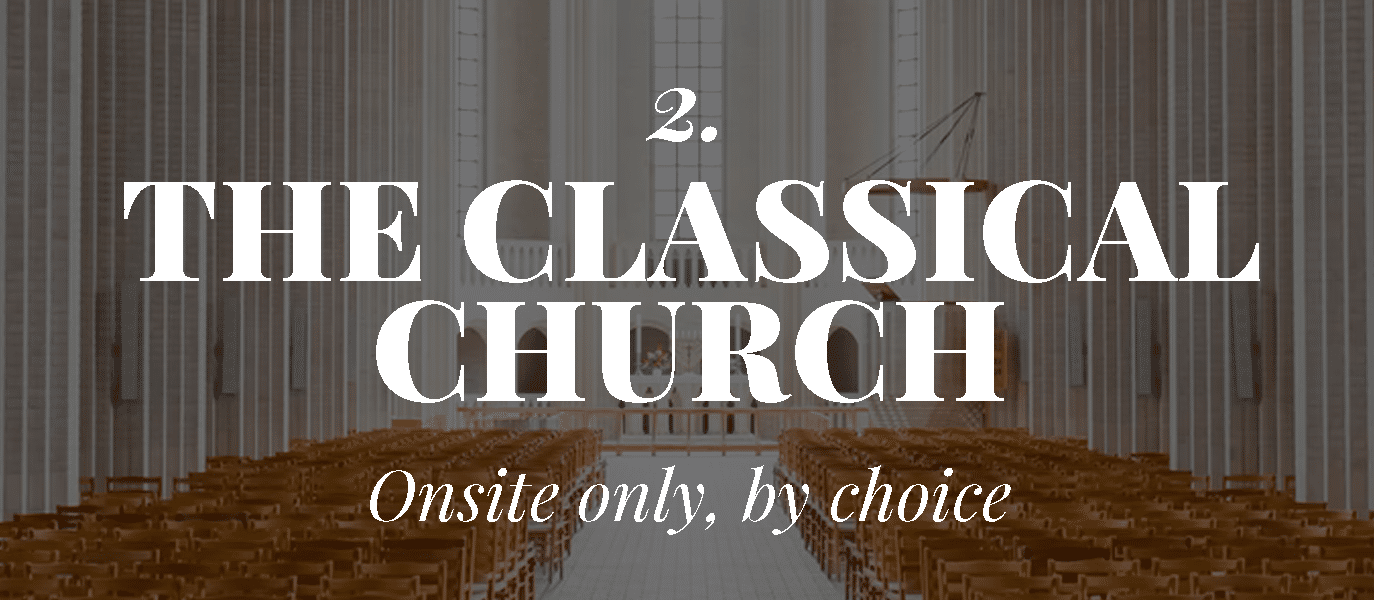
2. THE CLASSICAL CHURCH
Pros:
• A clear focus to help your church decide where to channel finite resources
Cons:
• A choice not to make full use of technology which may help evangelism and member engagement
There will be churches that have evolved your digital presence over the past two years, but now, after seeking the Lord, engaging your leadership, and weighing the merits, you may decide that your church is better off in the coming season without hybrid solutions.
Every church’s DNA, environment and membership is different. Going onsite only may be the best option at this time – it allows the dedication of resource and talents fully into the physical gathering, and it may be closer in line with your doctrinal interpretation of the weight God places on the physical gathering.
After all, didn’t Paul always say in his Epistles: Though I write you this letter, I would rather see you in person!
One caution for churches who opt for this Classical approach to gathering: Make sure everyone, the lowest and least among your members, is consulted in the process. Will anyone fall between the cracks? Might anyone be left out? Are there any available solutions for them?
Every sheep counts.

3. THE HYBRID CHURCH
Pros:
• Something for everyone
• Allows the church to reach those beyond church walls
Cons:
• Can be manpower- and resource-intensive
• The ongoing debate: Does online church breed a consumeristic, even lazy Christian?
We believe this is where the majority of churches will end up. There is an entire spectrum of digital adoption within this option. Physical services that are live-streamed. Cell groups conducted online. Some equipping classes onsite, some over Zoom.
We have grown familiar with most of these options since the pandemic hit, without which we couldn’t have effectively conducted church. But the question for us now must be: Which of these hybrid solutions should we now keep, and which are no longer needful as people reconvene?
The difference now is that once guidelines are relaxed, every decision must be intentional, rather than the church having its hand forced by circumstance.
This actually makes things harder for the decision-makers in every church. Every church must now ask the “why” in every act, before getting entrenched in a “digital liturgy” which may be resource-intensive but ineffective.
If your church is in this space, this is the key consideration in the process: How to find the balancing point between being online enough to reach those who need to be part of a digital church, while not feeding the consumeristic view of church, where a believer chooses purely based on personal preference and convenience rather than obedience to God and leadership.
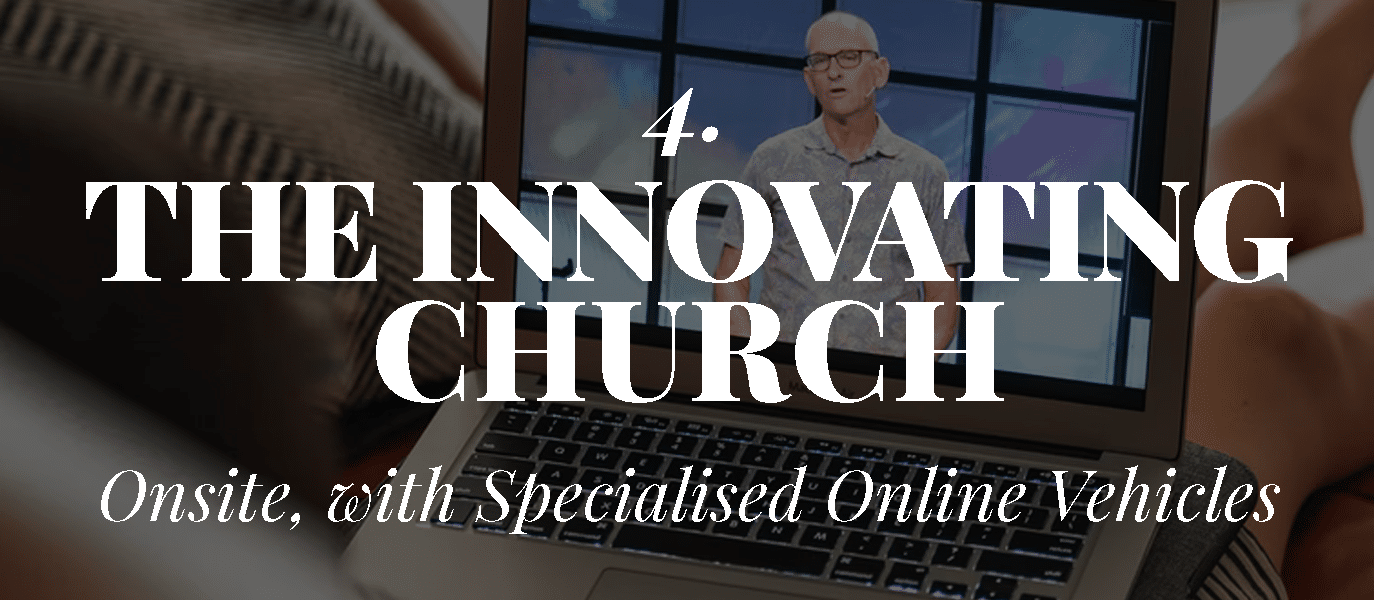
4. THE INNOVATING CHURCH
Pros:
• Creates a church experience that is tailor-made for digital visitors, while still nurturing the physical congregation
Cons:
• Not an option for every church. Requires staff/members with unique digital pioneering capabilities
What differentiates an Innovating Church from a Hybrid Church?
Hybrid Churches find digital means to distribute their existing physical events. However, an Innovating Church creates entirely new digital versions of their existing events.
For example, instead of live-streaming an ongoing physical service, an Innovating Church might create a new Digital Worship Service, operating under different parameters. Does it have to be on a Sunday morning? How long should an online service be? Does worship have to come before the Word? How will you administer the Holy Communion?
The Innovating Church functions in start-up mode. It embraces its vision and mission, but is not stubborn about the means to the end. It understands that an investment must be made for growth beyond the ordinary.
But just like the Internet start-up scene, there must be a threshold for failure. Churches traditionally are averse to experimentation, for reasons of financial stewardship and not discouraging the membership on projects that don’t gather traction.
I see a lot of the spirit of Innovation and adaptation in the early Acts church. Can’t gather in masses? Do it in homes. Gentiles can’t embrace a Jewish traditions? Then hold them only to the laws that truly matter (Acts 15).
Their reward? The Gospel preached far and wide, contextualised to various localities and to the unique circumstances of that persecuted moment in time. People saved in the thousands, who never would have before the shedding of legalistic blinkers.
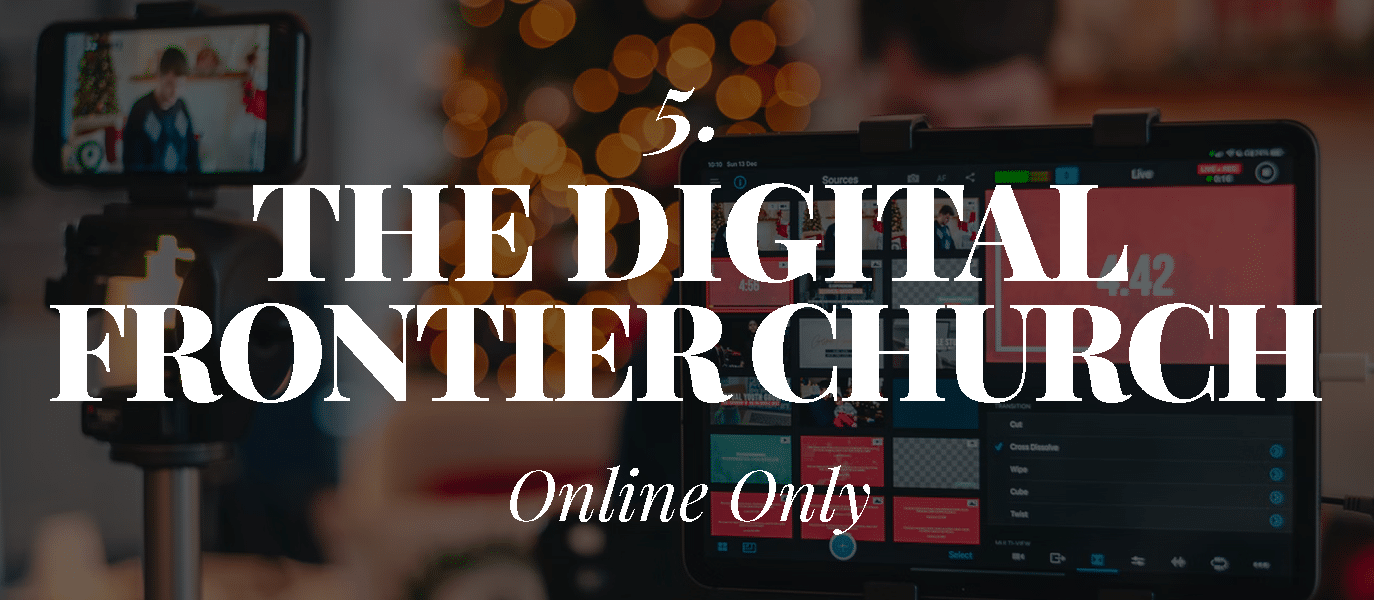
5. THE DIGITAL FRONTIER CHURCH
Pros:
• Starts on a clean slate – the chance to design church entirely for those online, maximising digital tools
• Caters to those unable to attend onsite, for reasons of mobility or persecution
Cons:
• Lacks the physical touch. Will need to adapt when an in-person gathering is required
• Must be careful not to attract those from other churches who are unwilling (not unable) to reconvene onsite
This is the SpaceX of Christendom! Exploring new frontiers, challenging every assumption, pioneering.
And just like SpaceX, this realm requires an Elon Musk of sorts, to discern a need, and chart a path through uncharted waters to address the need. Someone who asks “what if …” and has the digital know-how to see it to fruition.
There are amazing possibilities in this very niche realm. Outreach to the nations. A community for converts who are facing extreme persecution for their new faith. The shape and form of church can completely change.
We know of one such model pioneered overseas – name withheld to allow them to continue their “underground” digital work – which regularly sees tens of thousands of people tune in weekly from farflung regions. Most may never meet another Christian in real-life, and many will pay the price with their life should their faith become known.
If just reading this excites you: Don’t stop dreaming. We can’t wait to see what God might achieve through you!
Importantly, this should not be a model for believers who can gather but would rather not, for reasons of personal convenience. Salt&Light believes that the biblical model is clear and literal – while we may have to go digital for some seasons and reasons, we should still not give up the habit of meeting in person.
So, which way will you go?
Dear church leader, a word of encouragement as we go on this journey together: None of us has everything figured out. There are many uncertainties on this path, some of which are completely beyond our control, such as the geopolitical or wider economic situation.
Nonetheless, coming out of the pandemic, like the Jews in Nehemiah’s time coming back from exile, it is time to rebuild, or even to build anew. It is best to decide on a model now, plant your flag in that space, and do what it takes to make it the most effective model for your church given your specific circumstances.
Mainly onsite? Make sure that those who come onsite encounter God and interact with a community to a degree they don’t need to think about visiting another church.
Going digital? Make sure that the human aspect of church – friendship, kinship, relationship – isn’t sacrificed in the process.
May God give you wisdom and favour as you survey your land, that He may enlarge your tent and territory.
And finally: Dear church member, now is not the time to abandon your church, even if some online offering looks particularly alluring.
Your church needs you. It has been discouraged by the reluctance of people to return; wearied by all the exponential work needed to make online church happen amid forever-changing guidelines.
Don’t fall into the consumer-mindset church that pandemic-necessitated church-on-demand has fuelled. Because you are not merely someone a church serves. You are the church.
If you have a view on how things can be made better, then be part of the solution. Volunteer in the video team. Stand up and be counted as an usher greeting others at the door. Tithe generously, knowing all that technology isn’t cheap.
And whichever model of church your church chooses to embrace, embrace it too. As you and every member chooses to do so, then it will become clear, that any model of church can be a good model – as long as the people are united in purpose and in love.
We are an independent, non-profit organisation that relies on the generosity of our readers, such as yourself, to continue serving the kingdom. Every dollar donated goes directly back into our editorial coverage.
Would you consider partnering with us in our kingdom work by supporting us financially, either as a one-off donation, or a recurring pledge?
Support Salt&Light


